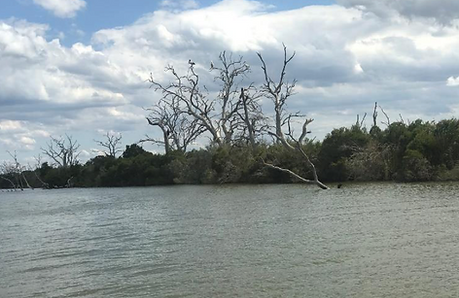
Gippsland Environment Group Inc
Lobbying against environmental threats on the unceded lands of the GunaiKurnai, Yaitmathang, Ngarigo and Bidwell Peoples
Gippsland Lakes Submissions and Reports
Review: Gippsland Lakes Ocean Action access long term monitoring and management plan
The Gippsland Environment Group review, (with input from Friends of Latrobe Water and Environment Justice Australia was wilfully ignored by Gippsland Ports/DEECA.
Basically, the entrance dredging at Lakes Entrance is too deep, and is one of the causes of the Gippsland Lakes system becoming ‘marine’ instead of brackish (ie; too salty for the Lakes plants and animals to thrive – or survive in some cases). Ports claims of “long term monitoring” are a farce.
The lack of water availability for the environment and water ecosystem health is a fundamental concern. Another urgent concern is the need to reduce the depth of the entrance at Lakes Entrance. Water quality is not being monitored or tested properly in Gippsland Lakes' feeder streams. Management of the Gippsland Lakes system is currently fragmented and uncoordinated. There are over 30 authorities involved in the Lakes' management and more...
December 2021
Joint statement on the Central and Gippsland Sustainable Water Strategy
We come together to raise a united voice for the rivers and waterways of the Central and Gippsland regions, a voice that is currently being ignored in the State Government’s development of the next 10-year Sustainable Water Strategy
Unsustainable water management in the Gippsland Lakes: a legal analysis
Environment Justice Australia’s latest report details ways in which poor management of the Lakes ecology has generated “threats of serious or irreversible damage” to wetlands, vegetation, fish species and shoreline stability. Poor regulation has led to salinity from reduced freshwater inflows and the dredging of a permanent entrance to the Lakes. The impacts of logging, burning, mining and climate change are additional pressures.
Read summary here
March 2021
Presentation by GEG to Environment Justice Australia re Lakes salinity problems
Gippsland Environment Group believes the Gippsland Lakes' ecology can be rehabilitated –with relatively little effort and cost. To achieve this, three things must happen without delay: - An independent audit of the ecological function of the Gippsland Lakes system. - Reduce the depth of the Entrance to reduce salinity in the Lakes system. - Restore water for the environment - all the waters have an intrinsic right.
Presentation here
The Ramsar Convention on Wetlands and the Gippsland Lakes – Presentation by Max Finlayson
Adjunct Professor, Institute for Land, Water & Society, Charles Sturt University, Albury Chair for the Wise Use of Wetlands, IHE Delft, Institute for Water Education, Delft, Netherlands
Lakes Entrance Dredging Impacts
In 2005 Gippsland Ports (the port authority for Gippsland Lakes) undertook an environmental risk assessment of its operations and identified that increasing the depth of the entrance (capital dredging) will have extreme environmental impacts.
The Gippsland Lakes are now faced with increased tidal flow speeds (at the entrance), fringing vegetation dieback, bank erosion, increased salinity, the proliferation of exotic invasive marine species and the demise of native fauna such as sandworms and Black Bream.
Have you noticed that the Lakes are as salty as the sea? It’s not your imagination, it’s a fact. The Lakes have transformed from an estuarine environment to a salt water environment.
This is principally due to the dredging of the artificial entrance at Lakes Entrance from a historical depth of 2.5m to 6m in 2008.
Mercury in the Gippsland Lakes
As far back as 1980 state government scientists (J W Glover, G J Bacher & T S Pearce) identified that (the heavy metal) mercury has been accumulating in the Gippsland Lakes. Mercury sources include mining, discharges from Australian Paper’s Maryvale papermill and the fallout from burning coal in the Latrobe Valley.
These scientists recommended that further investigation is required to determine the distribution of mercury throughout the lakes, and whether significant quantities of mercury are still entering the lakes or being discharged from the lakes.
Gippsland Lakes Draft Environmental Strategy
The East Gippsland community can justifiably consider that the development of yet another Strategy is but a process to give the illusion of progress and that the issues so obviously requiring urgent attention on the lakes will again not be addressed.
This submission details the main issues of the Gippsland Lakes including: salinity, water quality, fisheries management, invasive species, Ramsar convention criteria, algal blooms, funding and human health impacts. Heaps of paperwork and years of no action to fix the problems.








